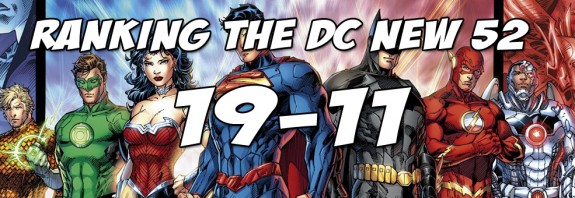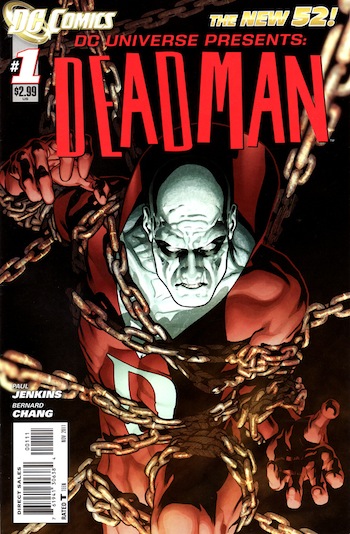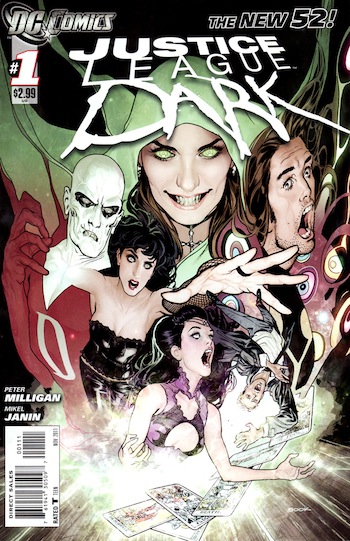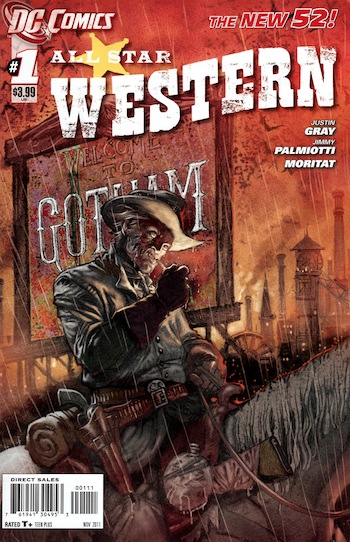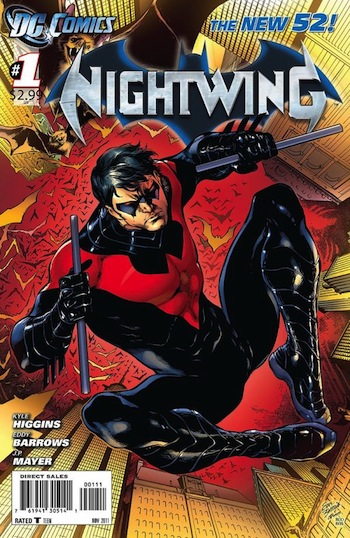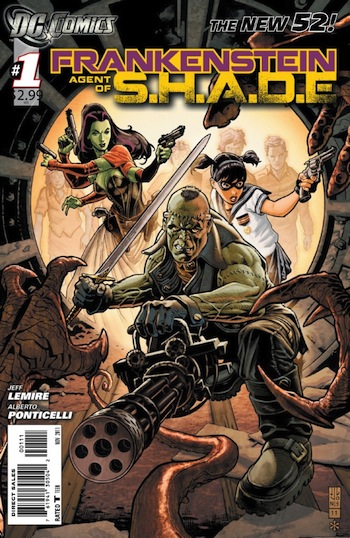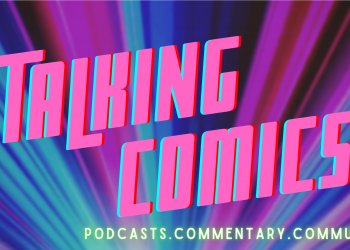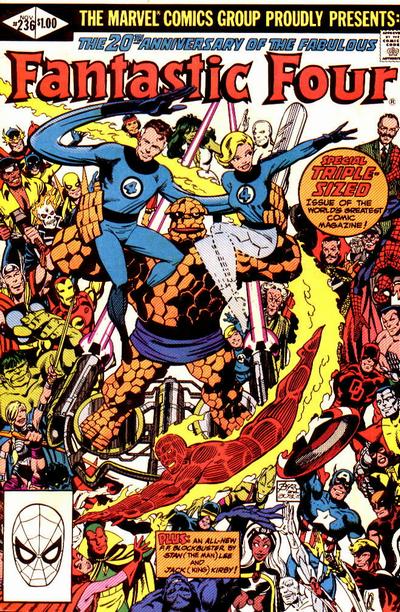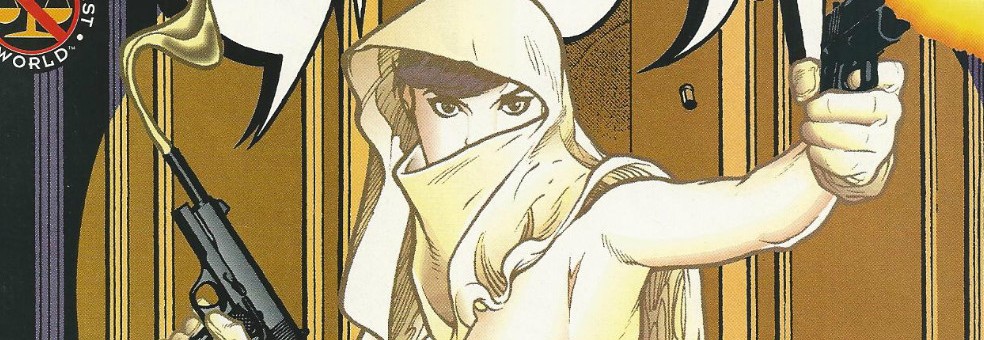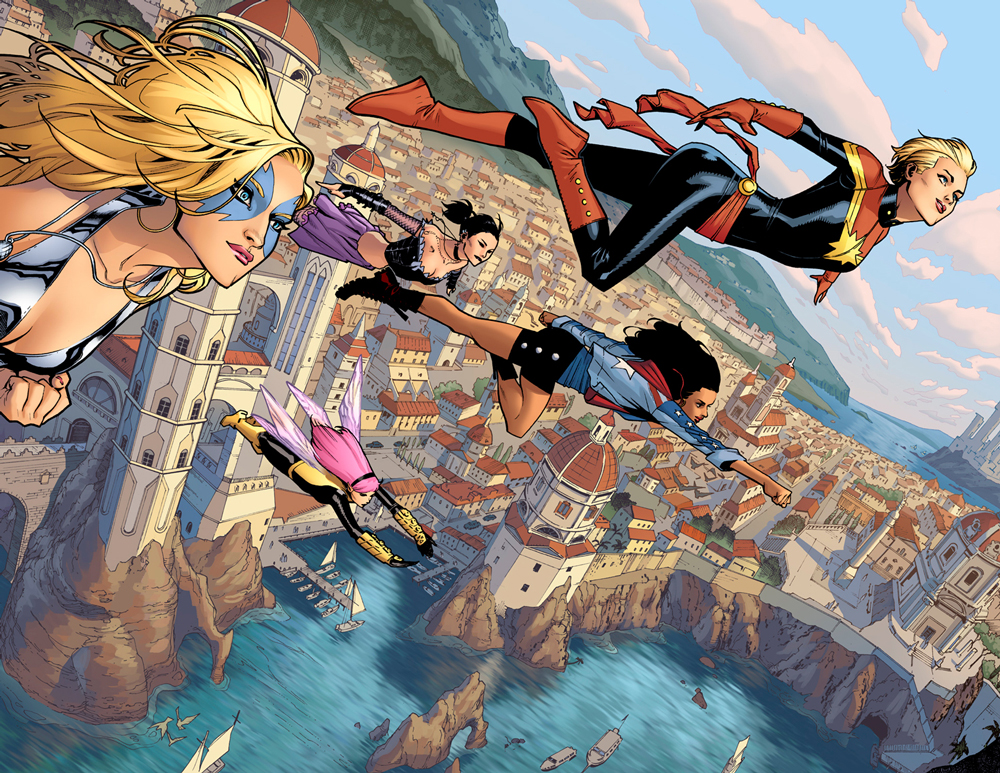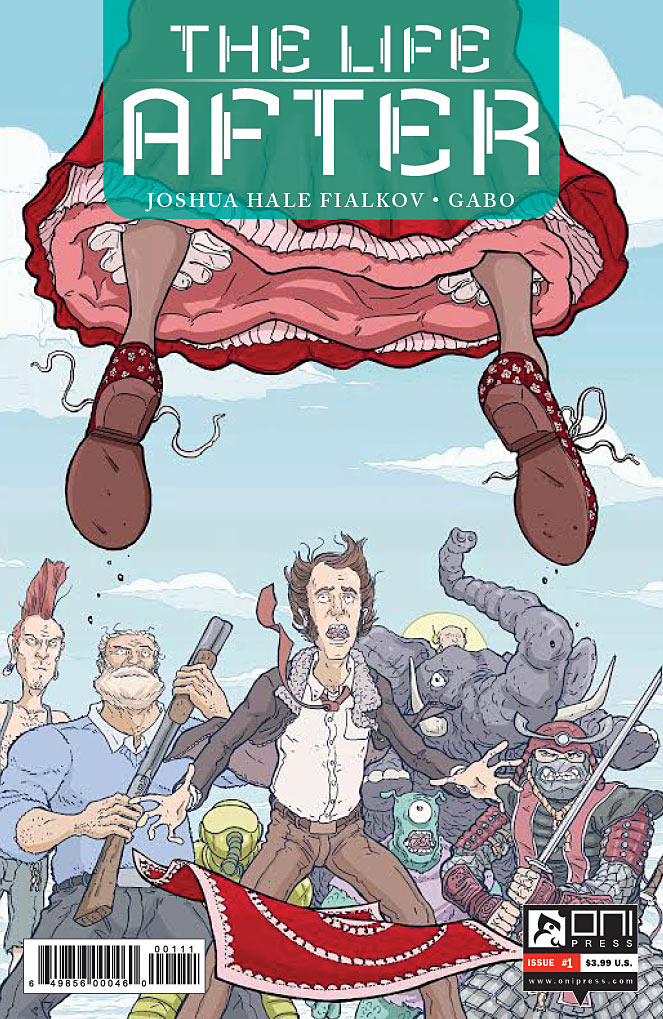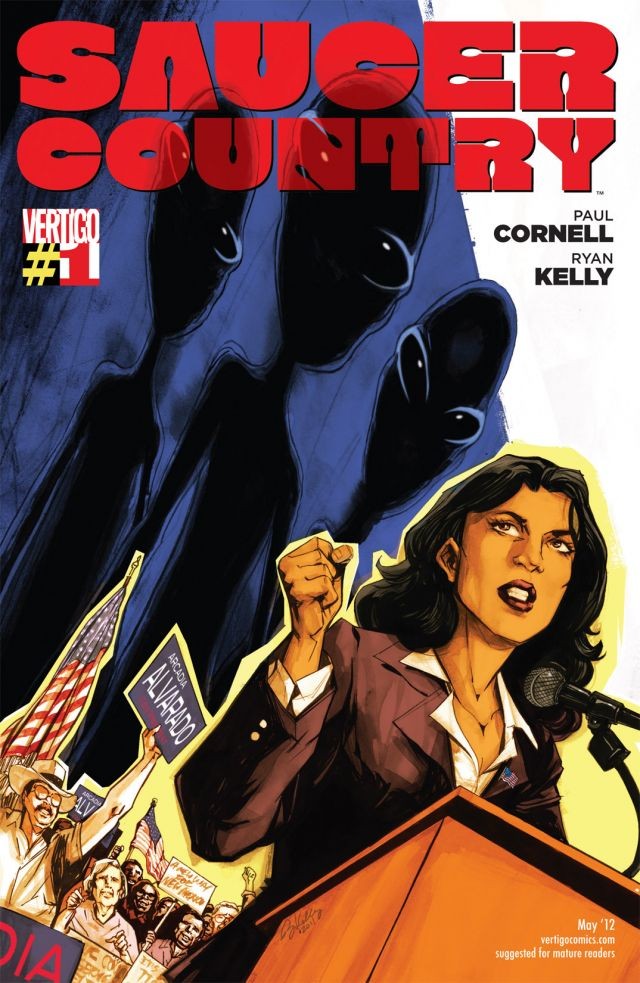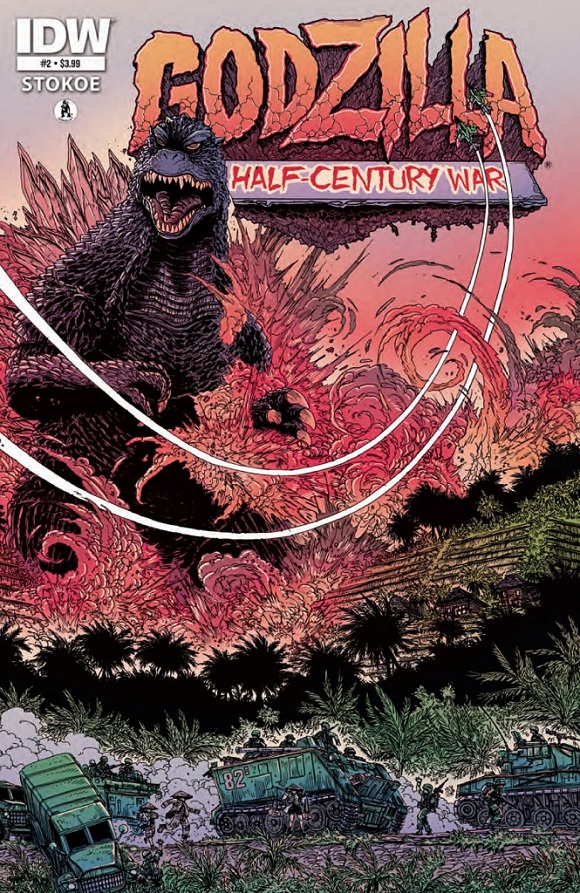By Bobby Shortle
Welcome to my ranking of the DC Comics New 52! I have spent the better part of the last month reading and re-reading all of the comics that debuted in this industry changing relaunch, and now over the next week or so I will be ranking them 52-1.
A couple of caveats, I have not read all twelve, or for some thirteen, issues of these series. Instead, I read as much as I could, until picking up the next issue seemed like the last thing I would ever want to do. For some that came at #3, for others #6 and for some it never came. If a book went under a creative change, I would always read at least one issue from that new creator in case things dramatically changed. I’m confident this allowed me to get a clear picture of the quality of the current runs and also helped me rank based on my gut feeling, rather than cold hard logic.
To give context to the article I have included excerpts from Talking Comics’ original reviews of these books and also sales numbers for the series in question.
If you missed it here is the link to the list featuring 52-40!
If you missed it here is the link to the list featuring 39-30!
If you missed it here is the link to the list featuring 29-20!
I welcome your reactions, disagreements and feedback which I hope you will leave in the comment section below. So, without further delay here is the Talking Comics DC New 52 Rankings:
19. Justice League
The Verdict Then:
From my review of Justice League #1
“Geoff Johns is one of my favorite comic writers and everything he does in this issue is solid. Its just not spectacular and I couldnʼt help wanting more. Justice League #1 feels like the first part of a first chapter, a cold opening before the credits of a TV show or the prologue to a film. All of that being said I have absolute faith in this creative team and will stick with them for the inevitable satisfying conclusion.”
The Verdict Now:
There are some immensely satisfying moments in Geoff Johns and Jim Lee’s Justice League, but they are padded by too much filler for this book to break into the upper echelon of DC New 52 titles. Most of the book’s failings have come because of the creative team’s focus on big action instead of real character development. This renders the title beautiful, but lacking in significant substance.
The second arc of the book has began to put a lot of the pieces together by finally infusing the fisticuffs with Johns’ signature personal touch. However, I can’t keep saying “just wait it out” anymore. The book is good, but its not consistently great and thats what I demand from a high profile title, written by one of comics’ best creators.
Sales:
08/2011: Justice League #1 — 185,776 (+336.2%)
09/2011: —
10/2011: Justice League #2 — 196,569 (+ 5.8%)
11/2011: Justice League #3 — 168,679 (- 14.2%)
12/2011: Justice League #4 — 149,314 (- 11.5%) [152,340]
01/2012: Justice League #5 — 144,670 (- 3.1%) [148,117]
02/2012: Justice League #6 — 140,819 (- 2.7%)
03/2012: Justice League #7 — 136,436 (- 3.1%)
04/2012: Justice League #8 — 133,240 (- 2.3%)
05/2012: Justice League #9 — 131,332 (- 1.4%)
06/2012: Justice League #10 — 130,502 (- 0.6%)
07/2012: Justice League #11 — 123,971 (- 5.0%)
18. DC UNIVERSE PRESENTS:
The Verdict Then:
From Brian Verderosa’s review of DC Universe Presents: Deadman #1
“Virtually everything in this story works, from the moments of levity to the more emotional payoffs. Brand is a truly interesting character, and the weight of his plight is taken with complete seriousness, which has not always been the case with the character.”
The Verdict Now:
DC Universe Presents is a difficult book to rank because of its very nature as an anthology series. In compiling this list I checked in with all the iterations of the series and, save for one, they all succeed on some level. Challengers of the Unknown was fun, but not my taste, Vandal Savage is a book I’d like to explore more, but it’s DC Universe Presents first outing that really outlines the potential of this comic.
The Deadman mini series is full of intelligent plotting, engaging supernatural escapades, and most importantly, a fantastic lead character. This tale of Boston Brand is one that takes full advantage of its short stay to tell an impactful and worthwhile tale of struggle and redemption. My mild interest in the other two arcs knocks the book down a bit in the rankings, but check out DC Universe Presents: Deadman, you won’t be sorry.
Sales:
09/2011: DCU Presents #1 — 45,701
10/2011: DCU Presents #2 — 41,584 (- 9.0%)
11/2011: DCU Presents #3 — 31,019 (-25.4%)
12/2011: DCU Presents #4 — 24,398 (-21.4%)
01/2012: DCU Presents #5 — 22,048 (- 9.6%)
02/2012: DCU Presents #6 — 20,188 (- 8.4%)
03/2012: DCU Presents #7 — 17,830 (-11.7%)
04/2012: DCU Presents #8 — 16,566 (- 7.1%)
05/2012: DCU Presents #9 — 15,776 (- 4.8%)
06/2012: DCU Presents #10 — 14,310 (- 9.3%)
07/2012: DCU Presents #11 — 13,619 (- 4.8%)
17. Green Lantern Corps
The Verdict Then:
From Brian Verderosa’s review of Green Lantern Corps #1
“Green Lanter Corps #1 is a book with potential, but doesn’t quite hit its mark on its first go-round. We do get introduced to a more calm, even funny Guy Gardner in this book…I’ve always enjoyed the secondary Lantern characters, but this debut just feels flat and unmoving. I don’t want to see them talking about why they’re upset — I want to see them doing something about it.”
The Verdict Now:
The idea of a mysterious threat from the Green Lantern Corps‘ past that comes back to haunt them in the present day is something that has become common place in the Johns’ era. But a well worn story doesn’t make Peter Tomasi’s Green Lantern Corp any less entertaining. The writer has a great grip on the honorable John Stewart, and even manages to make me a fan of historically annoying Guy Gardener. This feat alone makes this book worthy of praise, but it certainly doesn’t hurt that Fernando Pasarin can pencil the hell out of a battle scene.
The only knocks against the book are that it does feel a bit like it is following along in the shadow of Geoff Johns’ mainline Green Lantern book, and that,at times, it substitutes big action for clever plotting. Yet, even with those issues, it still ends up being an entertaining read with good character dynamics, great action and even some good emotional pathos.
Sales:
09/2011: Green Lantern Corps #1 — 83,077 (+55.7%) [94,800]
10/2011: Green Lantern Corps #2 — 78,501 (- 5.5%)
11/2011: Green Lantern Corps #3 — 65,393 (-16.7%)
12/2011: Green Lantern Corps #4 — 57,180 (-12.6%)
01/2012: Green Lantern Corps #5 — 54,088 (- 5.4%)
02/2012: Green Lantern Corps #6 — 51,168 (- 5.4%)
03/2012: Green Lantern Corps #7 — 48,692 (- 4.8%)
04/2012: Green Lantern Corps #8 — 47,584 (- 2.3%)
05/2012: Green Lantern Corps #9 — 46,336 (- 2.6%)
06/2012: Green Lantern Corps #10 — 44,615 (- 3.7%)
07/2012: Green Lantern Corps #11 — 42,996 (- 3.6%)
16. The Flash
The Verdict Then:
From my review of The Flash #1
“I remain hopeful for The Flash, because the final pages of the book finally open up to a bigger and more tantalizing mystery. A mystery that seems to promise not just high speed action but also an investigation into the character and past of Barry Allen. If all goes well the book could become one of my favorites but for now it remains stuck at the starting line.”
The Verdict Now:
The Flash is one of the more frustrating books in the upper ranks of the New 52, because it has included some of my favorite issues in the entire relaunch, but it has also been marred by several mediocre outings. The book gets points for its spot on depiction of Barry Allen, its utterly jaw dropping art and its efforts to take full advantage of the idea of a universe reboot. Brian Buccellato and Francis Manapul have worked hard to reinvent the rogues gallery and the very reasons why The Flash does what he does. But for every great choice, there has been a run of the mill one as well, and so the book can’t quite take the leap into greatness.
Sales:
09/2011: Flash #1 — 129,260 (+135.4%)
10/2011: Flash #2 — 114,137 (- 11.7%)
11/2011: Flash #3 — 90,417 (- 20.8%)
12/2011: Flash #4 — 77,336 (- 14.5%)
01/2012: Flash #5 — 71,611 (- 7.4%)
02/2012: Flash #6 — 68,061 (- 5.0%)
03/2012: Flash #7 — 64,975 (- 4.5%)
04/2012: Flash #8 — 63,702 (- 2.0%)
05/2012: Flash #9 — 62,807 (- 1.4%)
06/2012: Flash #10 — 55,681 (- 11.4%)
07/2012: Flash #11 — 53,674 (- 3.6%)
15. Justice League Dark
The Verdict Then:
From my review of Justice League Dark #1
“The story is dark and chilling but has a rye sense of humor when levity is needed. Mikel Janin’s art is beautiful with a flowing painterly style that really draws you in.”
The Verdict Now:
Justice League Dark is a book which has remained consistent in tone since day one. It manages plays in the seedier sector of the DC Universe, while never getting exploitive or too grimy, and it gives page time to the often ignored magical side of things. Its plots are twisting, complicated narratives of muddled prophecies, double crosses and ancient dictums. These can be daunting, but they also reward those patient enough to see them through. I fully expected the book to take the next step when Jeff Lemire took over with issue #9, and while his run has been very good, it has not taken off creatively like the other titles he writes. One thing that remains extraordinary is Mikel Janin’s art who has brought it in every single issue. Justice League Dark is a very good book that is missing an intangible to make it a great one, but it is still very much worth a read.
Sales:
09/2011: Justice League Dark #1 — 69,840
10/2011: Justice League Dark #2 — 63,392 (- 9.2%)
11/2011: Justice League Dark #3 — 51,674 (-18.5%)
12/2011: Justice League Dark #4 — 44,750 (-13.4%)
01/2012: Justice League Dark #5 — 40,996 (- 8.4%)
02/2012: Justice League Dark #6 — 38,360 (- 6.4%)
03/2012: Justice League Dark #7 — 36,089 (- 5.9%)
04/2012: Justice League Dark #8 — 35,022 (- 3.0%)
05/2012: Justice League Dark #9 — 34,649 (- 1.1%)
06/2012: Justice League Dark #10 — 33,238 (- 4.1%)
07/2012: Justice League Dark #11 — 31,792 (- 4.4%)
14. All-Star Western
The Verdict Then:
From Brian Verderosa’s review of All-Star Western #1
“Palmiotti and Gray’s script is a wonderful melding of mystery and intrigue, utilizing characters such as Amadeus Arkham and Hex to flesh out a 19th century Gotham world.”
The Verdict Now:
I had never read a Jonah Hex comic before the New 52, in fact my only exposure to him was from his underwhelming movie appearance, but after All Star Western, I am now a full believer in his potential. Jimmy Palmiotti and Justin Gray weave a twisting mystery story, while never short changing their characters and Moritat’s art is bloody and beautiful all at the same time. The historical setting also allows the writers to play with a cast of characters that other writers don’t get the chance to mess with and this makes for a story with a real feeling of freshness. We are beginning to brush up against “great” territory here, and while not every issue of this book is a winner, it’s certainly something every comic fan should give a chance.
Sales:
08/2011: Jonah Hex #70 — 10,369 (Before New 52)
09/2011: ASW #1 — 43,681 (+321.3%)
10/2011: ASW #2 — 39,857 (- 8.8%)
11/2011: ASW #3 — 32,776 (- 17.8%)
12/2011: ASW #4 — 29,349 (- 10.5%)
01/2012: ASW #5 — 27,206 (- 7.3%)
02/2012: ASW #6 — 26,170 (- 3.8%)
03/2012: ASW #7 — 25,349 (- 3.1%)
04/2012: ASW #8 — 25,040 (- 1.2%)
05/2012: ASW #9 — 31,413 (+ 25.5%)
06/2012: ASW #10 — 25,334 (- 19.4%)
07/2012: ASW #11 — 23,572 (- 7.0%)
13. Nightwing
The Verdict Then:
From Brad Jones’ review of Nightwing #1
“Nightwing is a solid book with great art, well-written character drama and an interesting plot.”
The Verdict Now:
Kyle Higgins’ Nightwing is a rock solid title through and through that at points has moments of true greatness. Its biggest strength is that Higgins just plain gets the character of Dick Grayson and it’s a treat every month to see his explorations of the original Boy Wonder. I have loved the way Dick’s past, from Haley’s Circus to his relationship with Barbara Gordon, has been weaved into every aspect of the plot of this title. Higgins also manages to retain Grayson’s positive personality throughout all of the harrowing events and revelations he must go through, and in a relatively dark comic book landscape, that is admirable. The biggest negative about Nightwing has been Eddy Barrows art, which always captures the acrobatic action expertly, but has often come up short in the more quiet moments. Despite these things it’s a book I’m excited to read every month and that is a testament to it’s consistent quality.
Sales:
09/2011: Nightwing #1 — 69,686
10/2011: Nightwing #2 — 73,054 (+ 4.8%)
11/2011: Nightwing #3 — 64,098 (-12.3%)
12/2011: Nightwing #4 — 57,409 (-10.4%)
01/2012: Nightwing #5 — 56,040 (- 2.4%)
02/2012: Nightwing #6 — 53,036 (- 5.4%)
03/2012: Nightwing #7 — 50,489 (- 4.8%)
04/2012: Nightwing #8 — 52,063 (+ 3.1%)
05/2012: Nightwing #9 — 61,395 (+17.9%)
06/2012: Nightwing #10 — 50,585 (-17.6%)
07/2012: Nightwing #11 — 49,124 (- 2.9%)
12. I, Vampire
The Verdict Then:
From Steve Seigh’s Review of I, Vampire #1
“I really enjoyed the gothic yet playful way the two lovers conversed with one another. Andrews over-serious tone coupled with Mary’s playful quips and teasing made for an interesting chemistry that forced me to grow into liking both characters very much.”
The Verdict Now:
I, Vampire is a book I didn’t expect to like. I was tired of Vampire stories, especially Vampire love stories, but right of the bat Joshua Hale Fialkov lets you know, this is no Twilight. These are vicious creatures who want to massacre and rule the world, and not ones that want to find love in a rainy Pacific Northwest hamlet. Enter Andrew Bennett, a vampire himself, albeit one who is trying to stop his former lover Mary, Queen of Blood, from destroying the world. Andrew may be a good guy, but he is not gentle and his mission results in a lot of blood and guts being spilled. I, Vampire is a dark book, but it’s also one with a scent of hope, and a sprinkling of redemption. The series is also constantly surprising, as Fialkov seems to reinvent its very nature with every arc. It’s simple really, this little read title deserves your eyes on it.
Sales:
09/2011: I, Vampire #1 — 39,683
10/2011: I, Vampire #2 — 34,599 (-12.8%)
11/2011: I, Vampire #3 — 26,070 (-24.7%)
12/2011: I, Vampire #4 — 21,601 (-17.1%)
01/2012: I, Vampire #5 — 18,816 (-12.9%)
02/2012: I, Vampire #6 — 18,153 (- 3.5%)
03/2012: I, Vampire #7 — 18,440 (+ 1.6%)
04/2012: I, Vampire #8 — 18,717 (+ 1.5%)
05/2012: I, Vampire #9 — 17,175 (- 8.2%)
06/2012: I, Vampire #10 — 16,517 (- 3.8%)
07/2012: I, Vampire #11 — 15,734 (- 4.7%)
11. Frankenstein: Agent of Shade
The Verdict Then:
From Steve Seigh’s Review of Frankenstein: Agent of Shade #1
“If genetically altered movie monsters are your thing (they’re certainly mine) then totally pick this one up, it really comes together in the final pages and leaves you with a solid cliffhanger scenario.”
The Verdict Now:
Frankenstein: Agent of Shade is a bizarre book, one that is chalk full of crazy science fiction, over the top characters, and,oh yeah, monsters, monsters and more monsters. Jeff Lemire’s tale of genetically altered Universal monsters, working for a shady government organization brings the action and spectacle in spades, but it also manages to make relatable, funny people out of its deformed heroes. It’s no surprise that Jeff Lemire is able to take such a bananas concept and make it work so well, and amazingly new writer Matt Kindt has taken over without missing a beat. Props must also go out to Alberto Ponticelli for his art, which has the rough edge that goes just right with this tale of supernatural violence. If you haven’t been reading it’s time to catch up!
Sales:
09/2011: Frankenstein #1 — 41,551
10/2011: Frankenstein #2 — 40,423 (- 2.7%)
11/2011: Frankenstein #3 — 31,869 (-21.2%)
12/2011: Frankenstein #4 — 24,812 (-22.1%)
01/2012: Frankenstein #5 — 22,737 (- 8.4%)
02/2012: Frankenstein #6 — 20,463 (-10.0%)
03/2012: Frankenstein #7 — 18,891 (- 7.7%)
04/2012: Frankenstein #8 — 17,953 (- 5.0%)
05/2012: Frankenstein #9 — 17,266 (- 3.8%)
06/2012: Frankenstein #10 — 16,377 (- 5.2%)
07/2012: Frankenstein #11 — 15,635 (- 4.5%)


